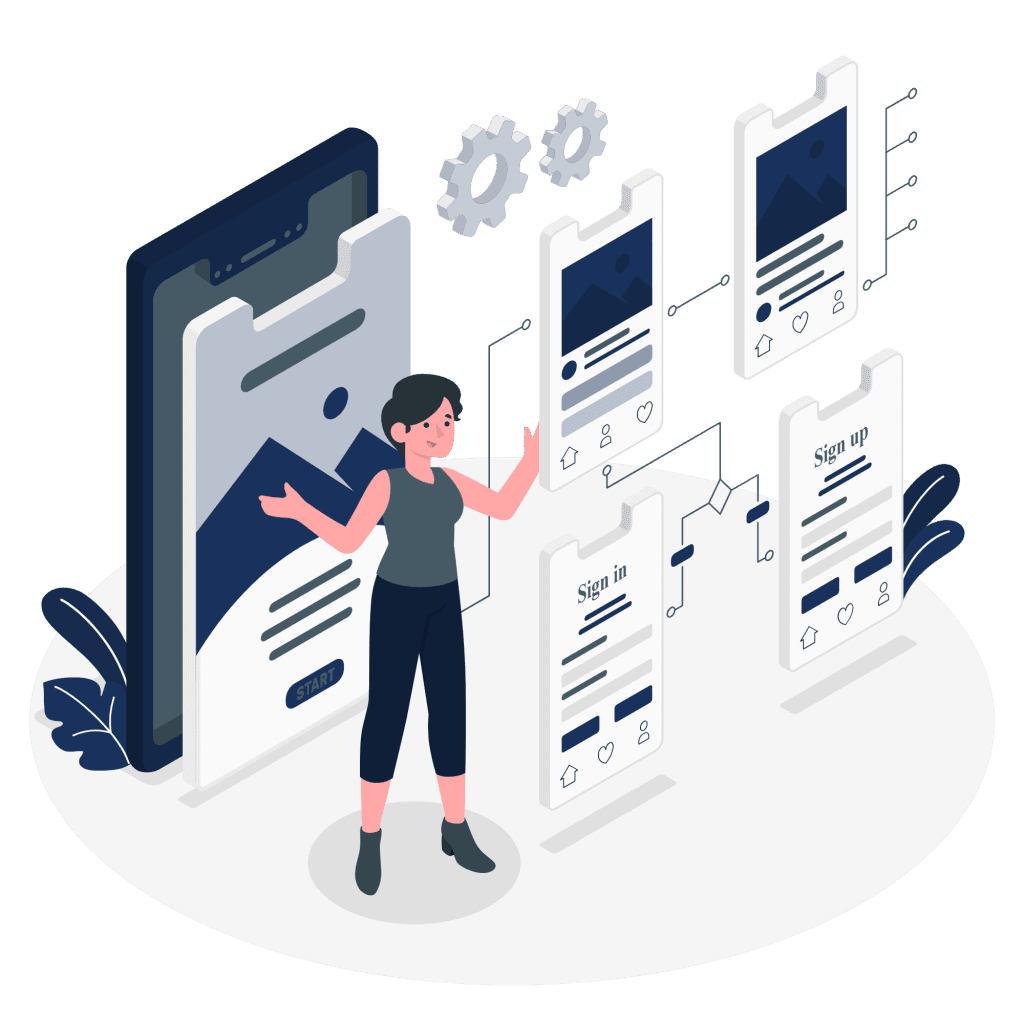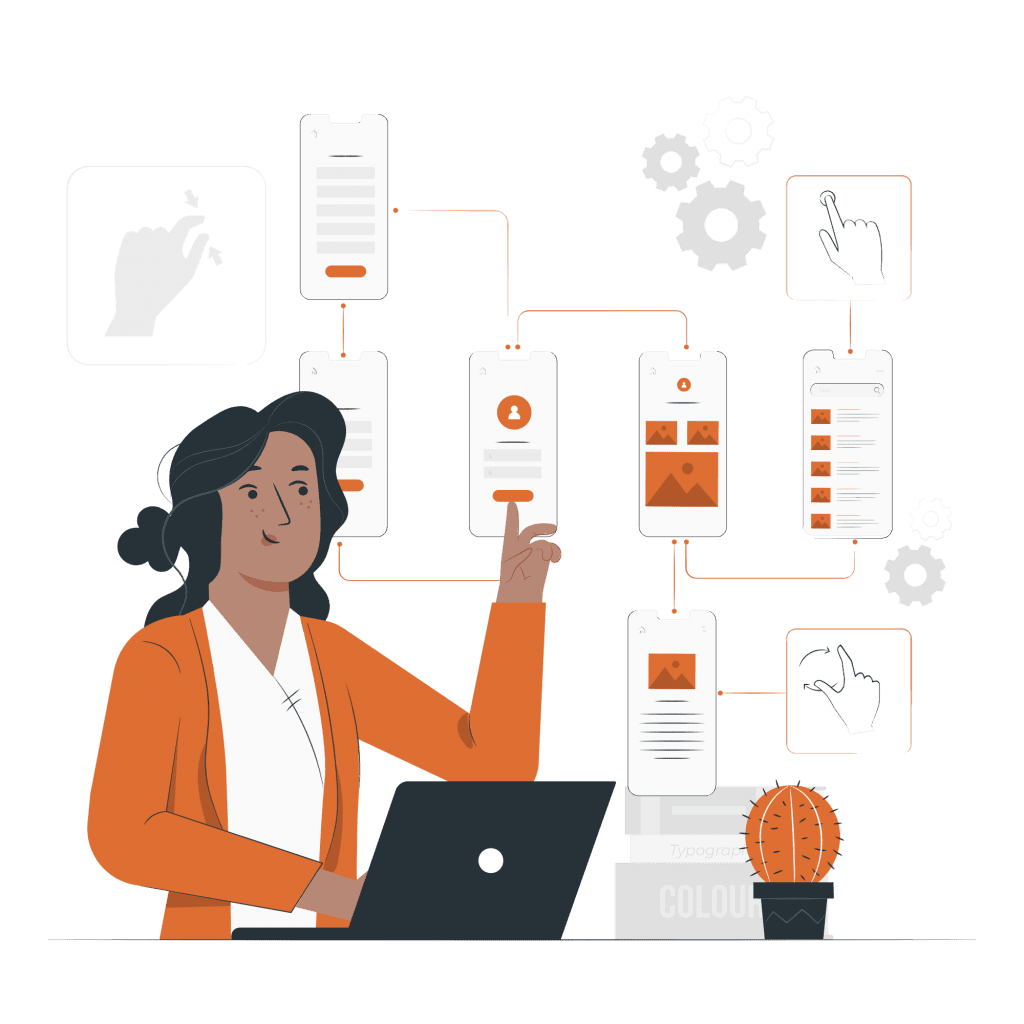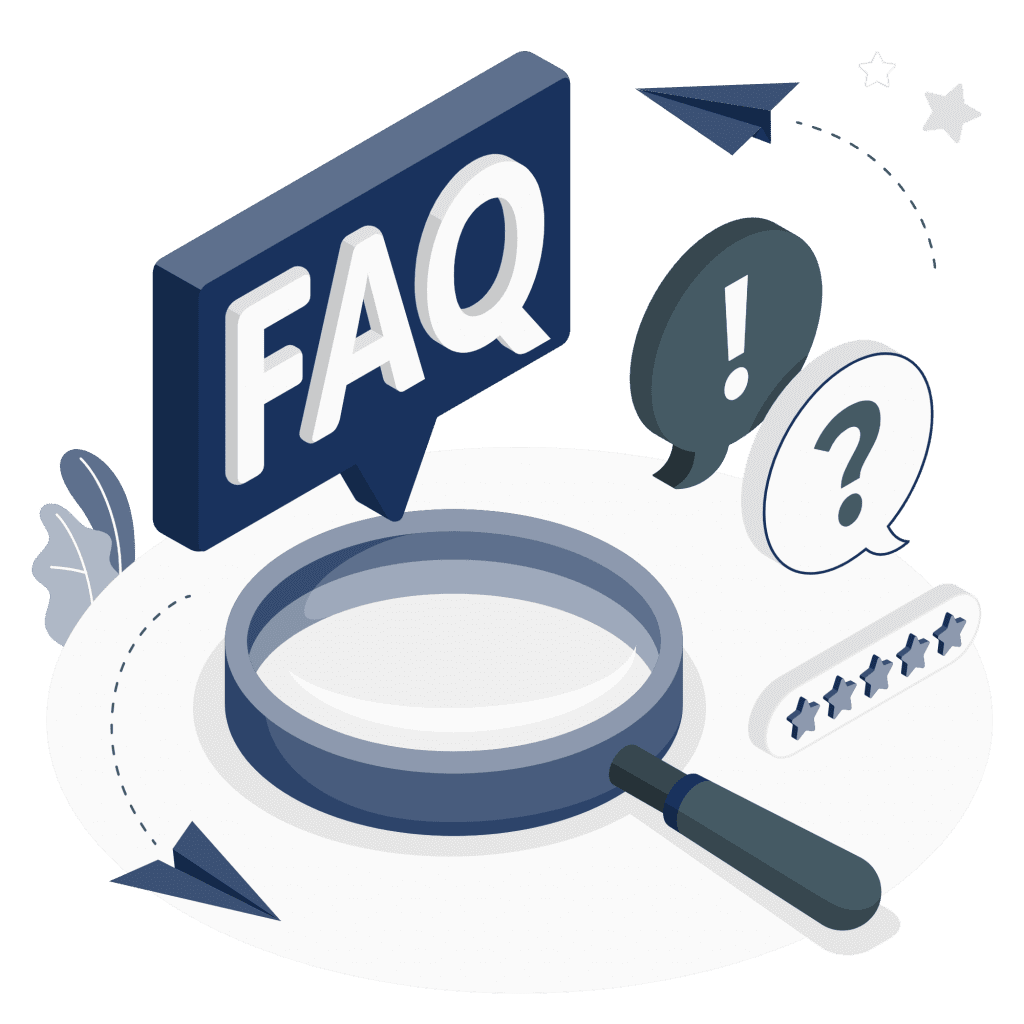ERP vs. CRM: In the Education Industry

Our demand generation team connects with hundreds of people who belong to the education ecosystem and gains insights into their admissions processes. In doing so, they encounter a variety of challenges, uncertainties, and inquiries.
The most common topic around which most queries hover is the confusion between an ERP and a CRM solution.
The ERP market remains in a phase of rapid expansion, with the total market size expected to exceed $49.5 billion by 2025. (Source: Truelist)
The CRM software market is the biggest in the world, and the growth isn’t slowing down. In fact, CRM is now expected to reach more than $80 billion in revenues by 2025. (Source: SuperOffice)
The education industry is highly affected by this expansion, and so the people belonging to this ecosystem are strongly considering these two options but often get stuck and end up being anxious about making the right choice for their institutions.
The most common questions they ask are:
- Which among the ERP or CRM systems helps fulfil the primary needs of our institution?
- What are the main differences between an ERP and a CRM system, and which one aligns better with our needs?
- What are the features and capabilities of both of these systems?
- What are the costs associated with implementing and maintaining each system, and what is the return on investment?
- Which of these two systems is more user-friendly, and how easy is it for staff to learn and use them effectively?
- What kind of reporting and analytics capabilities do ERP and CRM provides, and how can they help our institution make data-driven decisions?
- Which system among ERP and CRM is easiest to integrate with existing systems and infrastructure?
Enterprise Resource Planning (ERP) and Customer Relationship Management (CRM) are two essential software systems used by businesses to manage their operations.
This blog will explore the differences and similarities between them.
To start with, it’s important to understand the basics of both of these software programmes.

What is ERP?
ERP stands for “Enterprise Resource Planning,” and it is a software system that is designed to help educational institutions manage their resources efficiently.
ERP systems are used to streamline and automate various administrative tasks or post-admissions tasks such as student data management, attendance, course registration, grading, scheduling, and financial management. By integrating different departments and data sources into a single platform, ERP systems provide administrators with a unified view of the institution’s operations, which can help them make better-informed decisions.
In short, an ERP system can be a powerful post-admissions tool for educational institutions to improve their operational efficiency, reduce costs, and enhance the overall quality of education.
What is CRM?
CRM stands for “Customer Relationship Management,” and it plays a crucial role in managing the entire admissions process, from lead management to enrollment, or we can say the pre-admissions process.
The CRM system allows admissions teams to manage, track, and nurture leads from initial inquiry to enrolment. It captures data on prospective students’ interests, behaviors, and communication preferences to personalise communication and engagement strategies and increase the likelihood of conversion. It also automates certain tasks, such as sending follow-up emails, scheduling appointments, and providing relevant content to prospects.
The system provides valuable insights through a reporting and analytics dashboard, helping the admissions team make data-driven decisions and continually improve its strategies. Ultimately, the use of CRM in the admissions process can help educational institutions increase their enrollment, improve student retention, and enhance their overall reputation.
Key Difference between ERP and CRM

While both ERP and CRM systems are critical for educational institutions, they differ in their focus and purpose. The primary difference between the two is that ERP systems are designed to manage post-admissions tasks, while CRM systems are designed to manage external interactions with prospects, i.e., pre-admissions tasks.
ERP systems focus on integrating and streamlining internal processes, including financial management, which involves budgeting and accounting, faculty and staff management, and resource planning.
On the other hand, CRM systems focus on managing leads and their interactions, including sales, marketing, and counsellor support. CRM systems provide a 360-degree view of prospects, including their past interactions and preferences, allowing institutes to personalise their communications and drive maximum enrolments.
Now let’s have an overview of the key features of the individual systems to get a better insight into each system.
Key features of an ERP and CRM system
| ERP | CRM |
| Student information Management | Lead Management |
| Course Management | Communication Management |
| Attendance Management | Student Information Management |
| Examination Management | Appointment Management |
| Finance and Accounting | Field sales Tracker |
| Library Management | Event Management |
| Hostel Management | Mobile App Integration |
| Transport Management | Analytics and Reporting Dashboard |
| HR Management | Integration with Social Media |
Functionalities of ERP and CRM in an Educational Institute
| Functionality | ERP | CRM |
| Data management | Stores and manages student information, including personal details, academic records, attendance, and disciplinary history. | Tracks and manages communication with prospective students to assist in managing enrollment efforts. |
| Curriculum management | Manages course catalogues, class schedules, and teacher assignments. | NA |
| Financial management | Manages financial information, including tuition and fee collection, budgeting, and accounting. | NA |
| Human Resource Management | Manages employee information, including payroll, benefits, and performance evaluations. | NA |
| Communication management | Facilitates communication between teachers, students, and parents, including announcements, messaging, and video conferencing. | Facilitates communication with leads or prospective students through various channels, including email, phone, and social media, and provides a central platform for managing all communication. |
| Learning management | Provides tools and resources for online learning, including course materials, assessments, and student progress tracking. | NA |
| Analytics and Reporting | Provide data analytics and reporting, allowing administrators to monitor and analyse academic and administrative performance and make informed decisions based on the data. | Provide data analytics and reporting, allowing administrators to monitor and analyse recruitment and engagement efforts and make informed decisions based on the data. |
| Student enrollment | NA | Manage the enrolment efforts by tracking and managing communication with prospective students. |
| Admissions management | NA | Manages and streamlines the entire admissions process, including application tracking, document management, and student onboarding. |
| Lead engagement | NA | Facilitates communication with leads through various channels, including email, phone, and social media, and provides a central platform for managing all communication. |
| Integration with marketing channels | NA | The system integrates with marketing channels such as email marketing and social media advertising to improve lead generation and enrollment efforts. |
| Automated workflows | NA | Automates workflows related to lead management, including sending follow-up emails, scheduling appointments, and assigning tasks to recruitment staff. |
| Lead scoring | NA | Prioritises leads by assigning scores based on factors such as student interests, qualifications, and engagement. |
Functional Similarities between ERP and CRM
Looking at the overlap of the above-mentioned functionalities, ERP and CRM can be considered to be analogous to each other.
As several functions such as data management, automation, reporting, and integrations are performed by both systems but in different departmental tangents, ERP will solely focus on institution administration while CRM will focus on all horizons of prospective students until he/she enrols.
When to Implement ERP and CRM?

ERP and CRM are two essential software systems that can greatly benefit educational institutes. While the implementation of these systems can vary based on the specific needs of an institute, there are certain guidelines that can help determine when it is appropriate to implement them.
ERP can be used post-admissions to manage various administrative tasks such as student records, course schedules, financial management, and inventory management. ERP systems provide a centralised platform for managing all these activities, which can streamline processes and reduce administrative burdens. This can be especially useful for larger institutes with complex operations, multiple departments, and high volumes of data.
On the other hand, CRM can be used in pre-admissions tasks such as lead management, student recruitment, and marketing campaigns. With a CRM system, institutes can track and manage leads, segment them based on interests and demographics, and personalise communication with them. This can lead to higher conversion rates, improved student retention, and stronger relationships with prospective and current students.
By using ERP for post-admissions tasks and CRM for pre-admissions tasks, you can optimise your resources and provide a better experience for both staff and students.
When considering implementing ERP and CRM systems, it is important to conduct a thorough analysis of the specific needs of your institute, the available resources, and the potential benefits.
Why not integrate both ERP and CRM?

Education institutes can benefit greatly from integrating both ERP and CRM systems to streamline the post- and pre-admissions processes. ERP systems can automate and integrate processes such as student registration, fee management, scheduling, and course management. On the other hand, CRM systems can manage the student lifecycle, including pre-admission activities such as lead management, prospect tracking, and marketing automation.
Integrating both systems allows for a more efficient and streamlined process for admissions, which results in cost savings, an improved student experience, and better engagement with prospects. The integration enables real-time data exchange between the systems, reducing the need for manual data entry and increasing accuracy.
Additionally, it allows for better visibility into student information across departments, improving communication and collaboration between different teams within the institute. Overall, integrating ERP and CRM systems can improve the efficiency and effectiveness of admissions processes, providing a competitive advantage in a highly competitive industry.
Answering the Unanswered

We believe all your doubts and questions regarding the functionalities and efficiency of your use case of an ERP and a CRM system have now been answered.
There are still a few questions listed above related to cost, ROI, integration, etc. that are unanswered. But you need not worry, as we believe in the complete transmission of knowledge, and we won’t let you hang there. So below are the answers to a few frequently asked questions, thus completing this blog with a holistic approach.
Ques. What are the costs associated with implementing and maintaining each system, and what is the return on investment?
Ans. The cost of implementing and maintaining an ERP or CRM system depends on various factors, such as the size of the organization, the level of customization required, and more. However, the cost of CRM largely depends on the number of active users, whereas you have to pay the complete cost for implementing an ERP system. The return on investment largely depends on the specific goals and objectives of the organization.
Ques. Which of these two systems is more user-friendly, and how easy is it for staff to learn and use them effectively?
Ans. Both ERP and CRM systems can be user-friendly, depending on the specific software and user interface. The ease of use also depends on the level of customization required and the complexity of the institute’s processes. You should always look for a CRM with a steep learning curve. Likewise, ExtraaEdge education CRM is single-window software with a user-friendly interface that makes it easy for counselors and admissions cell members to comprehend and use.
Ques. Among ERP and CRM, which system can be easily tailored to meet the specific needs of our institution?
Ans. Both ERP and CRM systems can be tailored to meet the specific needs of an institution. However, the level of customisation required and the ease of customisation may vary depending on the specific software. For instance, ExtraaEdge education CRM can be customised as per your use case.
Ques. How secure are the systems, and what measures are in place to protect sensitive data and information?
Ans. Both ERP and CRM systems typically include security features such as user authentication, data encryption, and access control. It is important to ensure that the chosen software is compliant with relevant data protection and privacy regulations. However, you should be cognizant of this point when looking for an ideal ERP and CRM to implement.
Ques. Which system among ERP and CRM is easiest to integrate with existing systems and infrastructure?
Ans. The ease of integration depends on the specific software and infrastructure of the institution. Both ERP and CRM systems typically offer integration capabilities with other software and systems. It is important to ensure that the chosen software is compatible with the existing infrastructure.
In Final Analysis
After gaining a comprehensive understanding of ERP and CRM, including their distinct functionalities and similarities, you should now have a clearer understanding of which system is best suited for your institute and satisfies your specific use case.
However, selecting the appropriate system provider is critical, and our blog, “A Guide to Choosing the Best Education CRM,” outlines the essential parameters to consider when purchasing a CRM.
If you’re seeking a CRM customized to your specific requirements, the ExtraaEdge education CRM is an ideal option. You may schedule a 30-minute demo at any time to obtain a complete view of our product.


